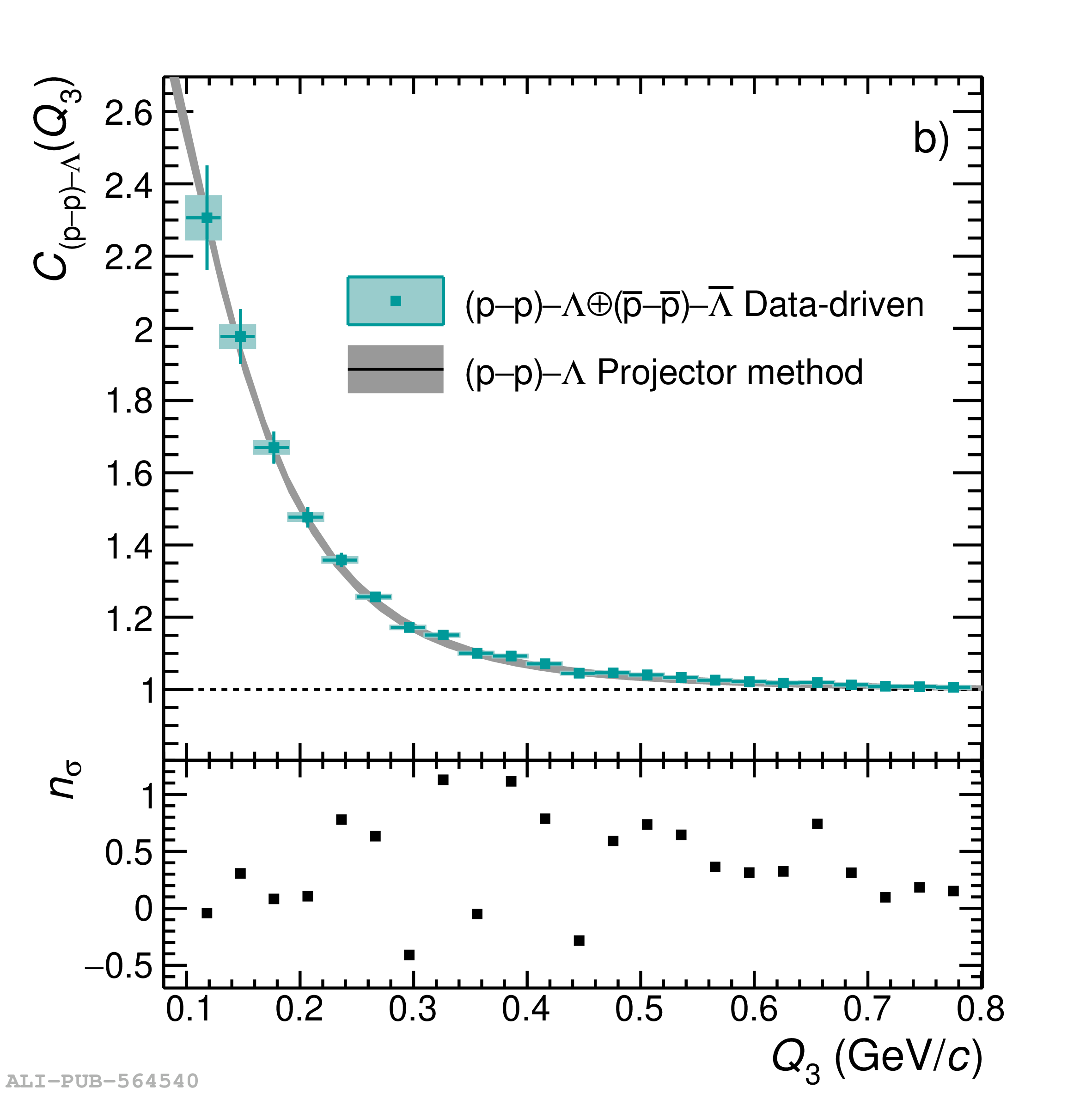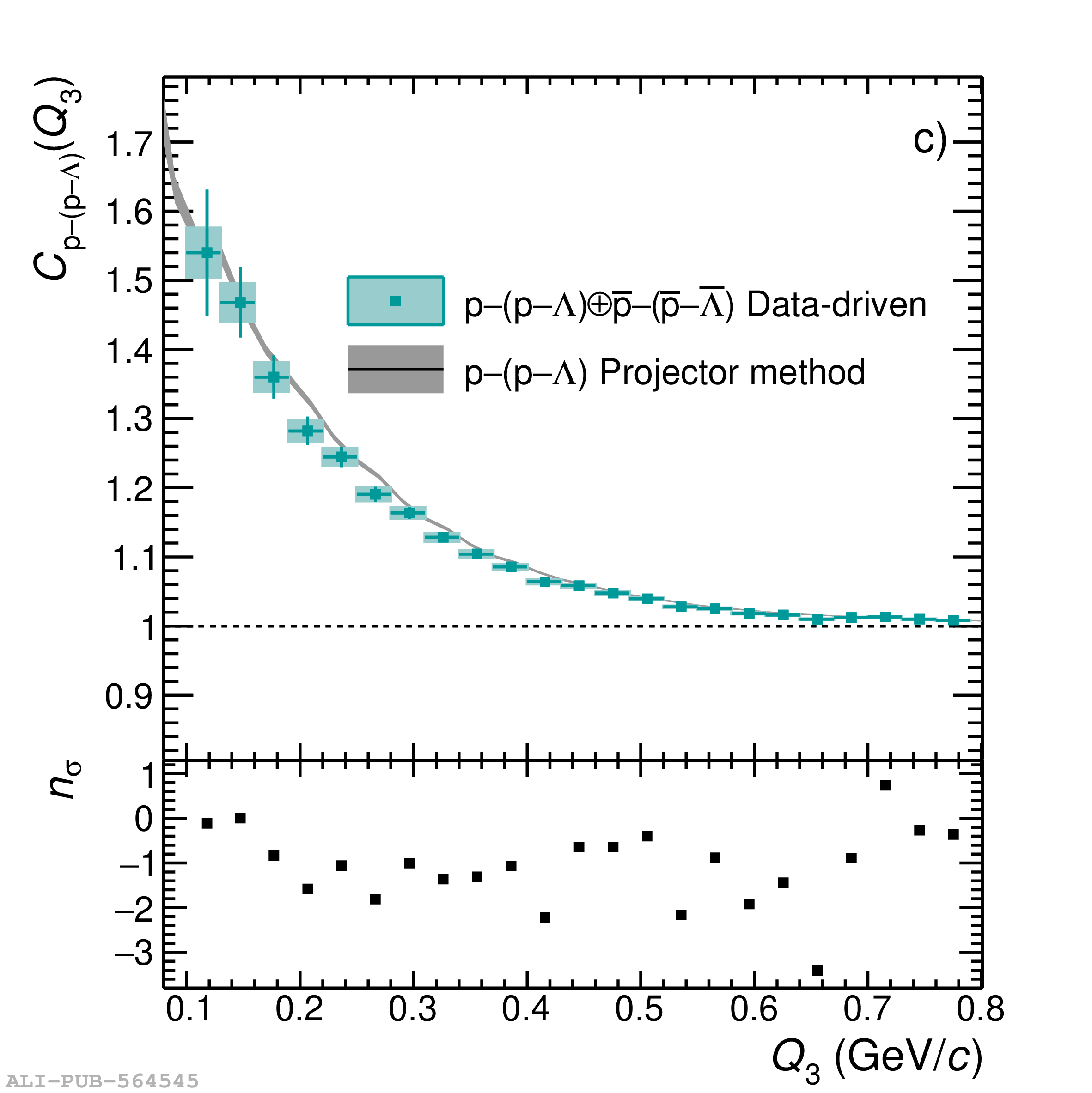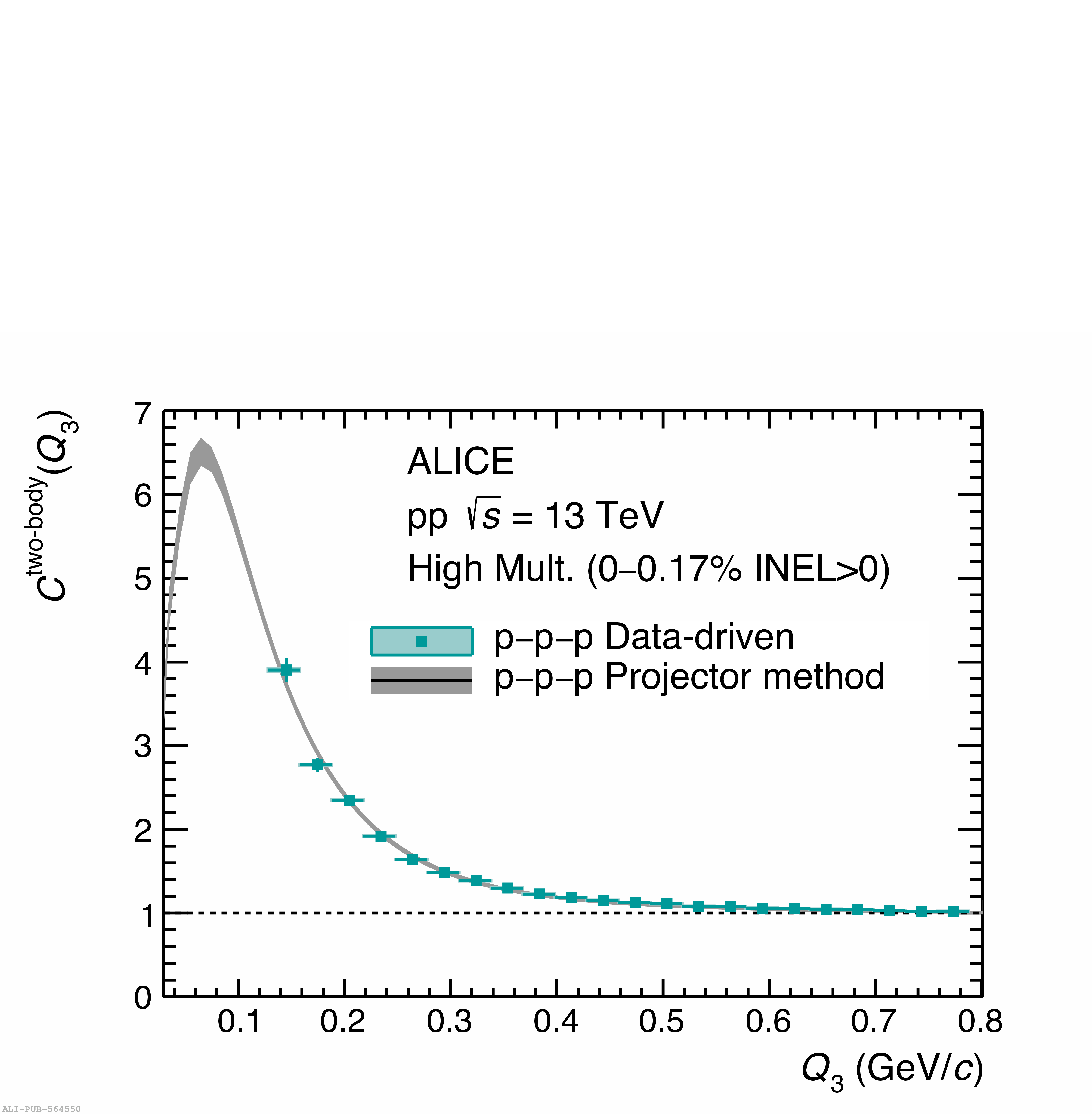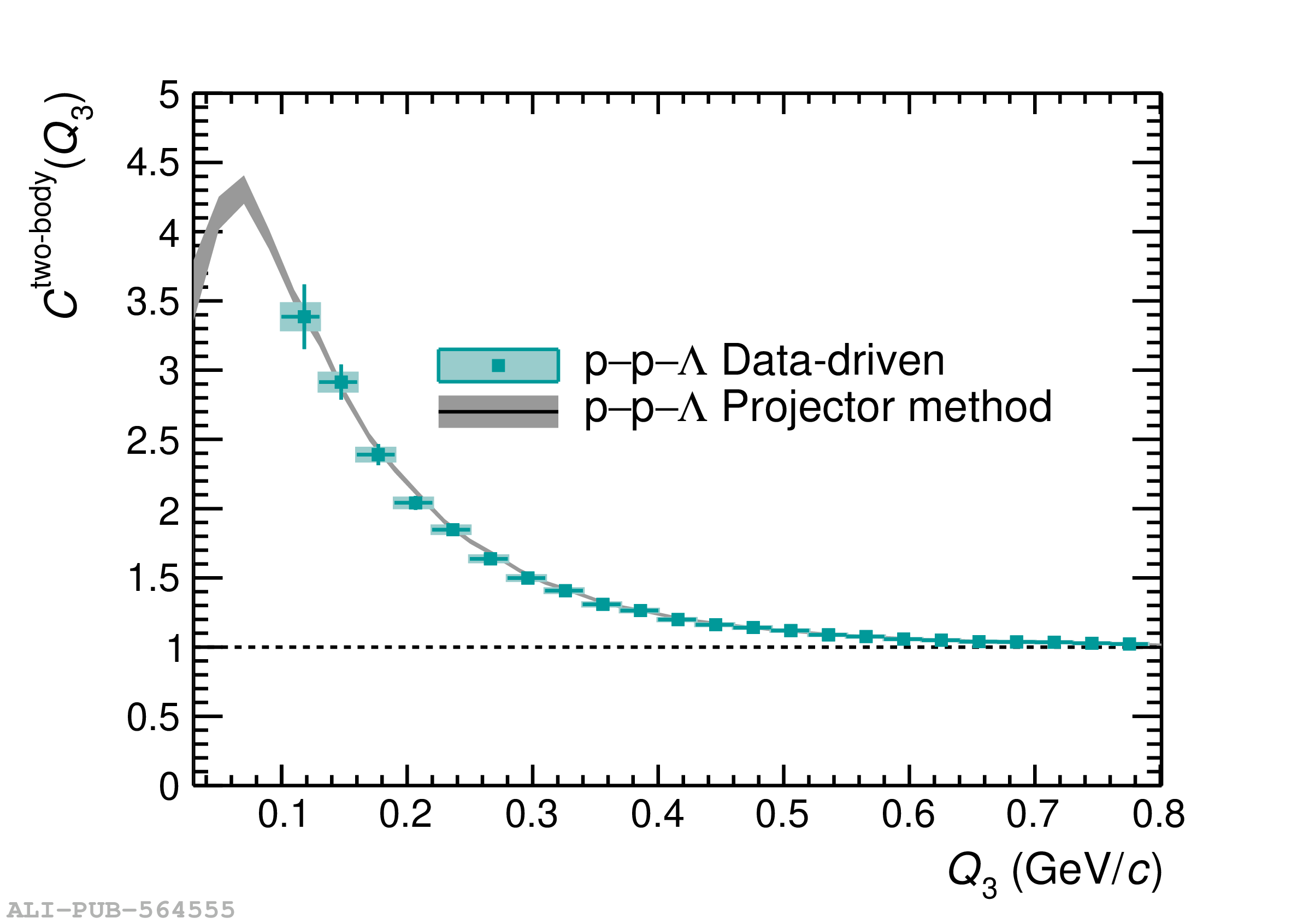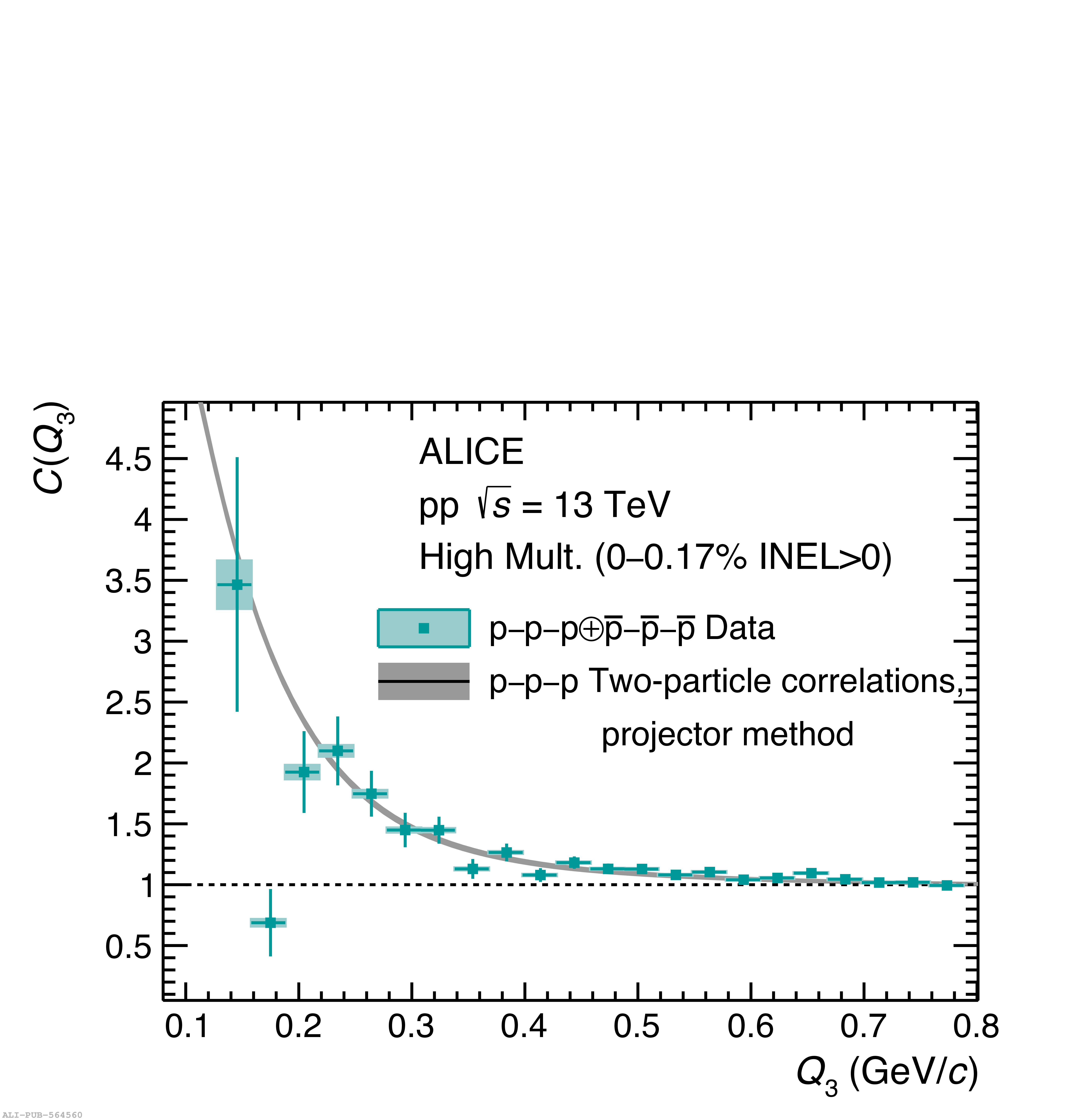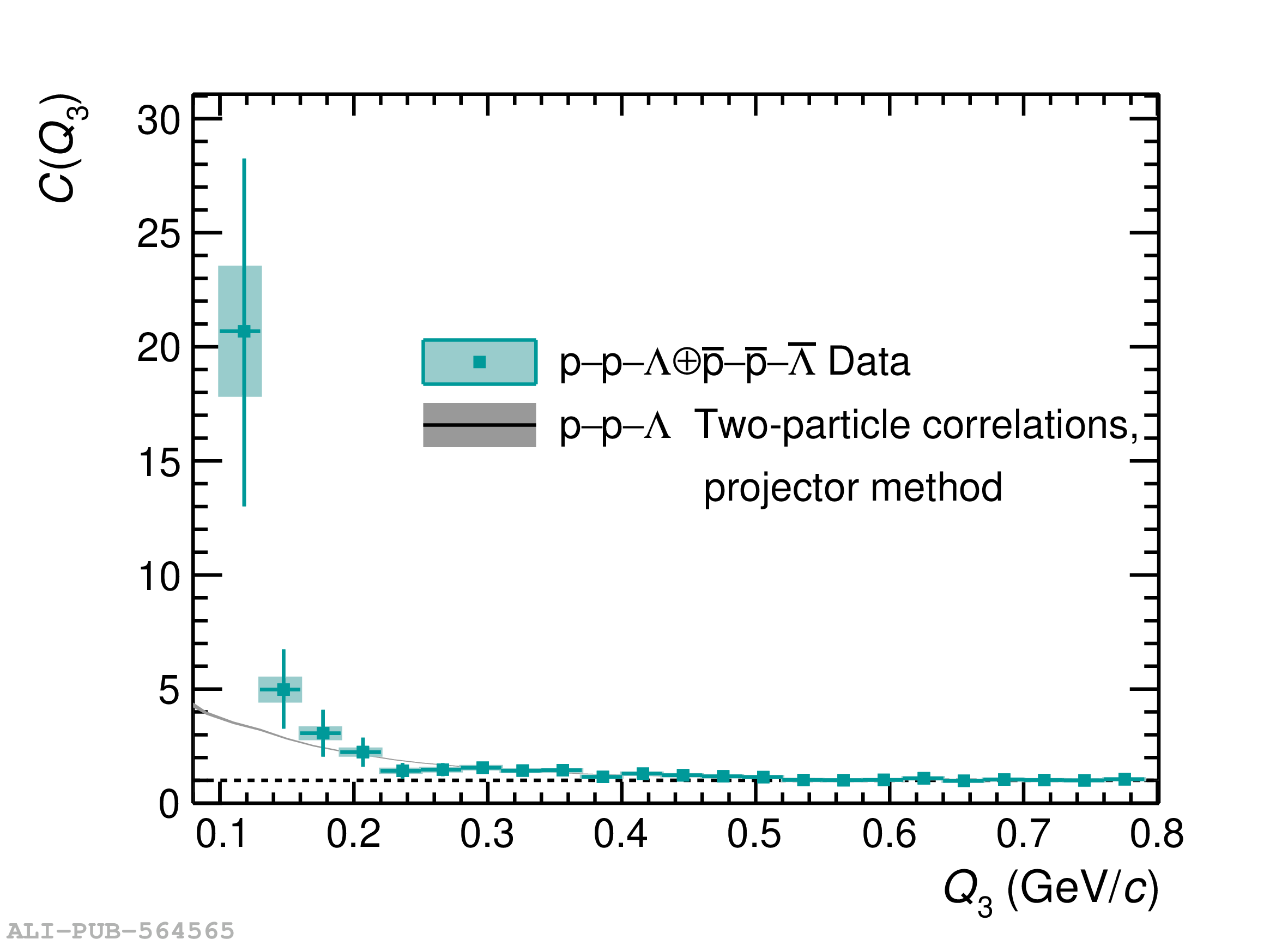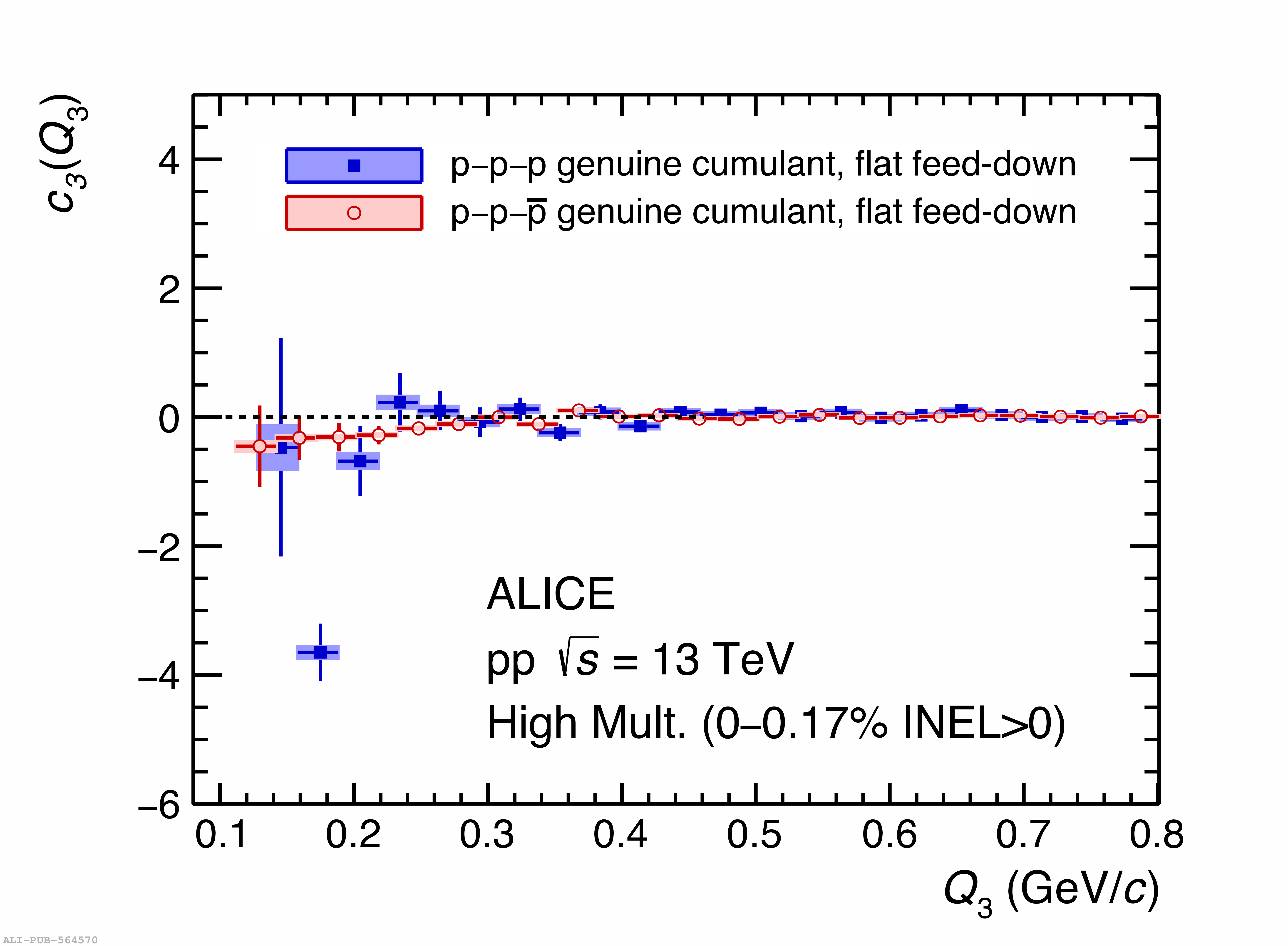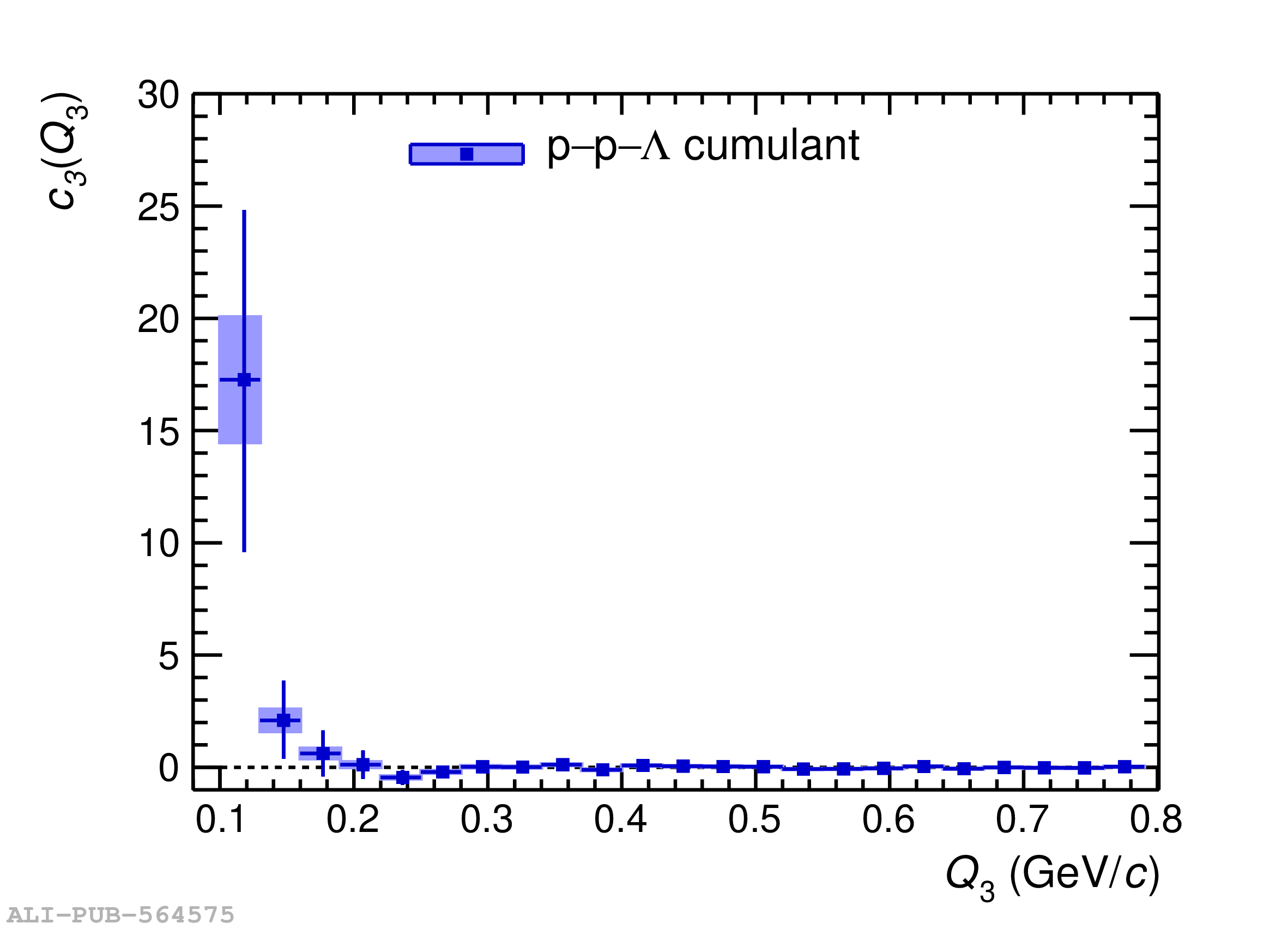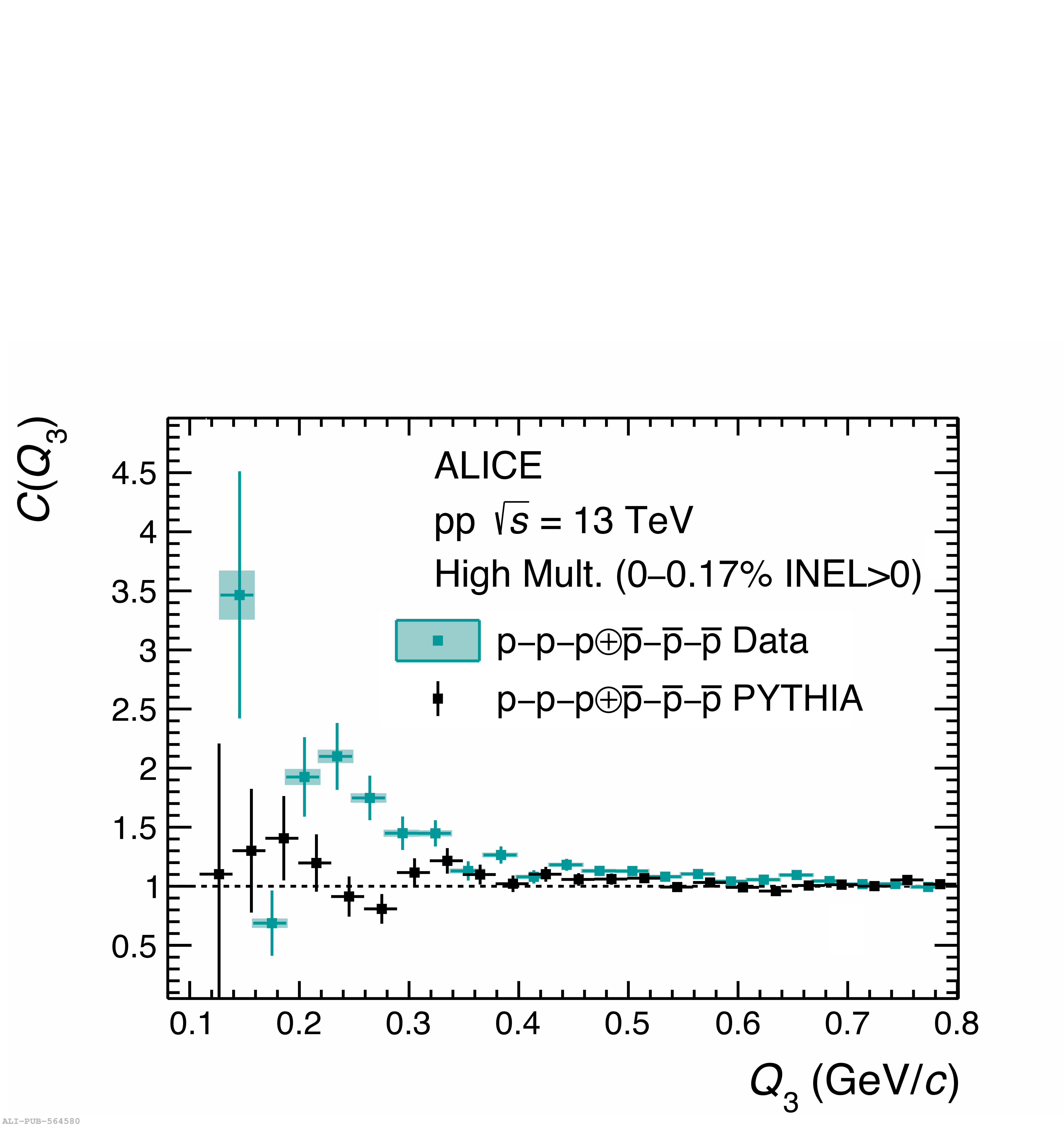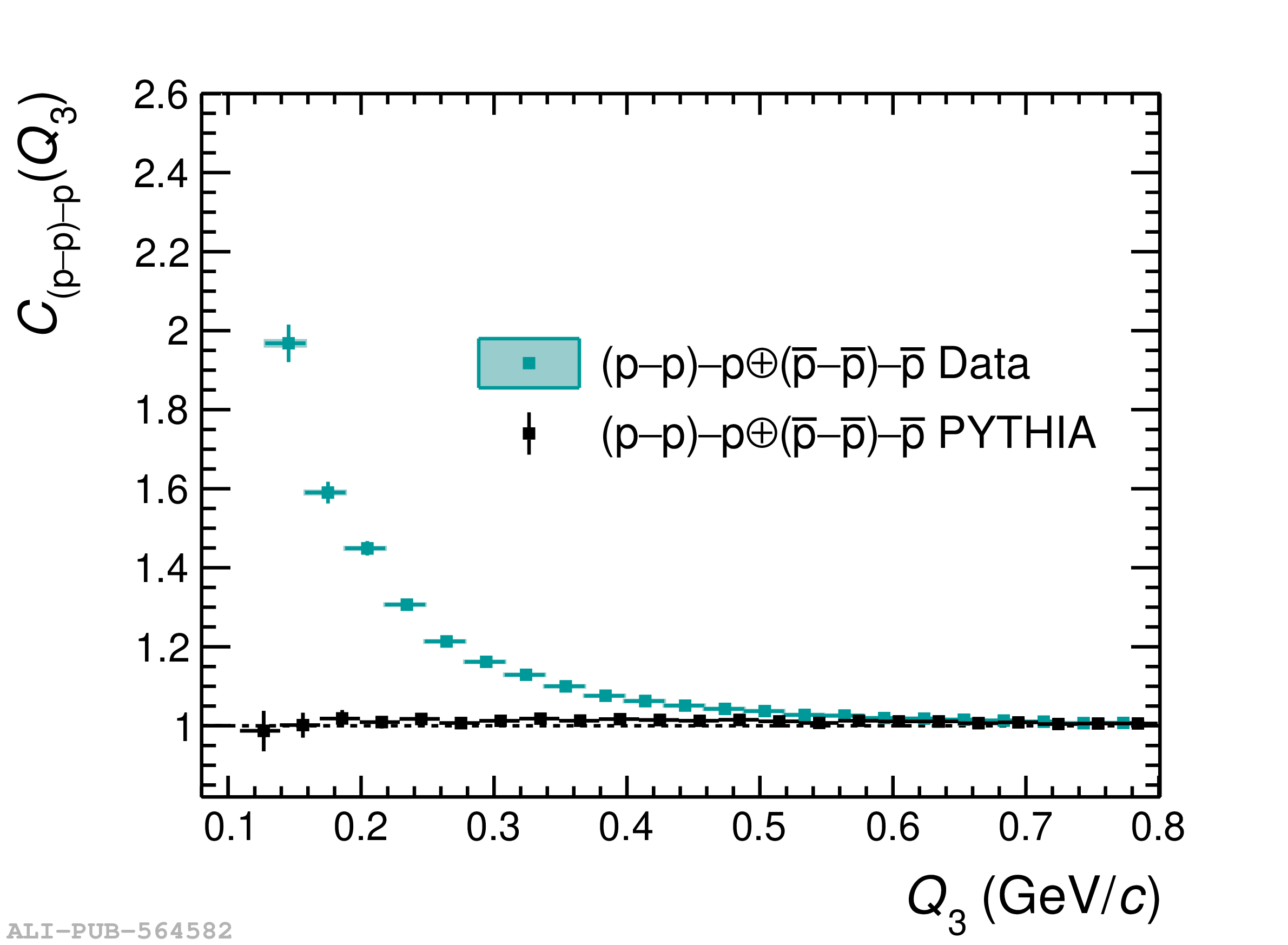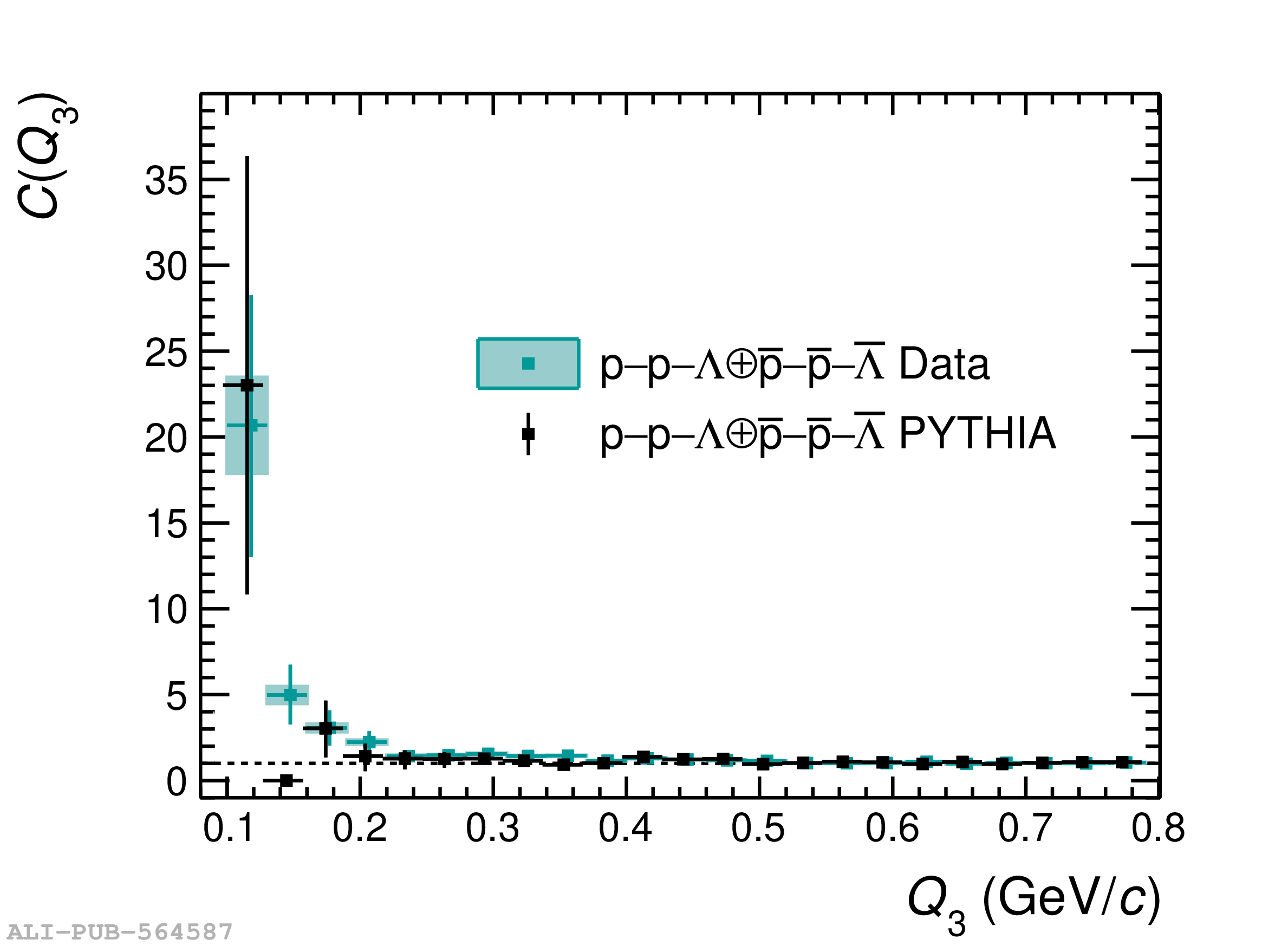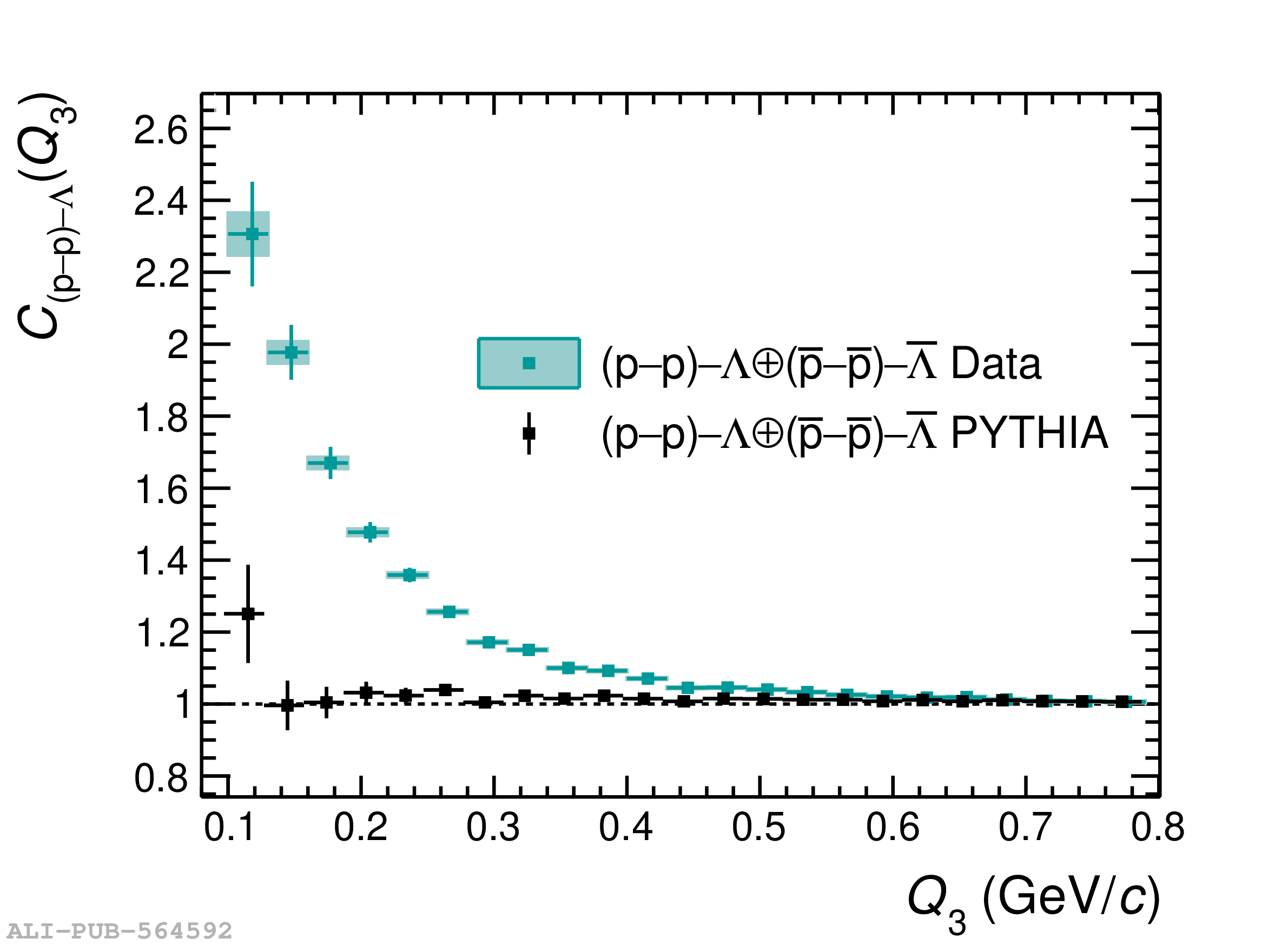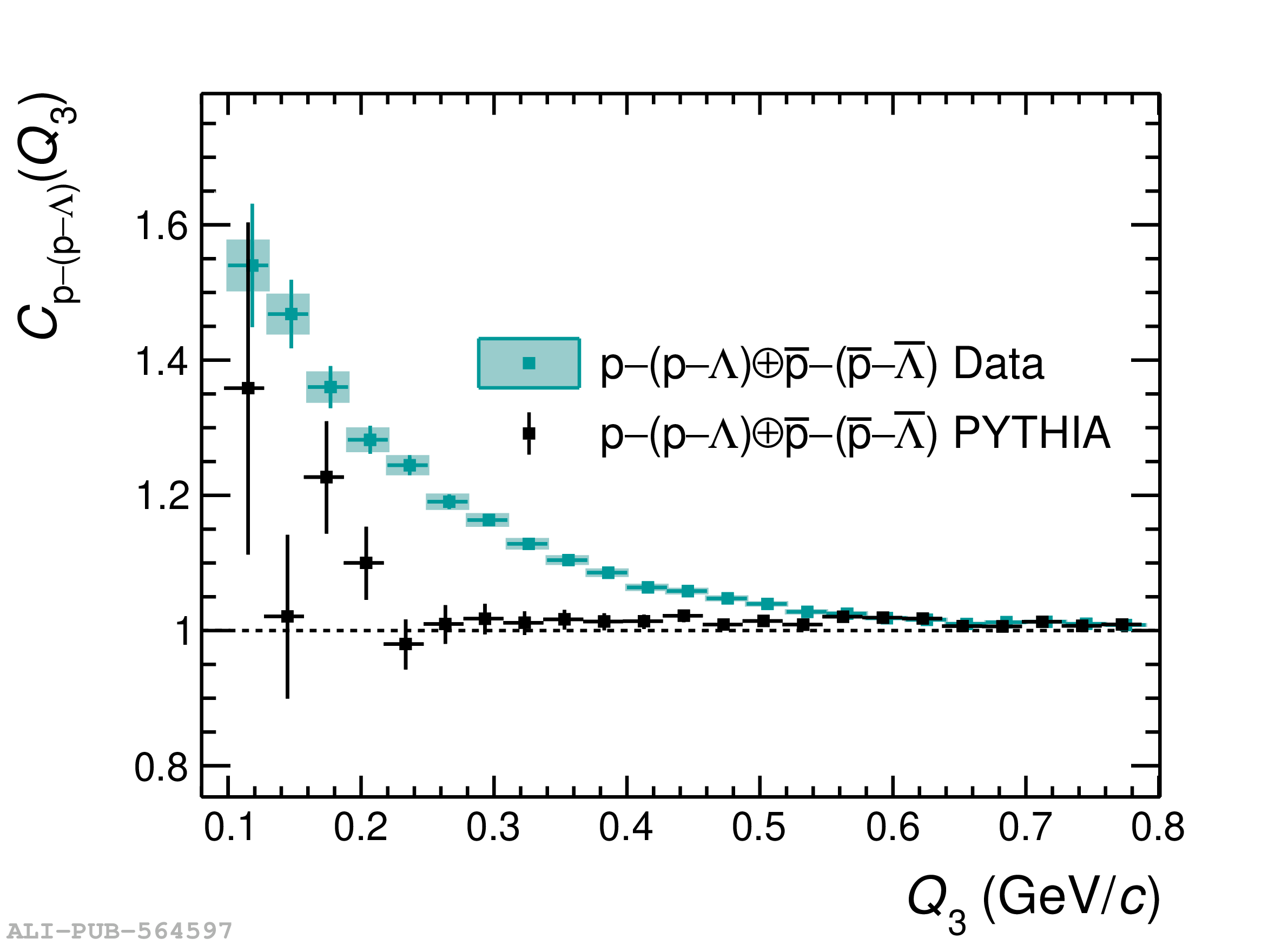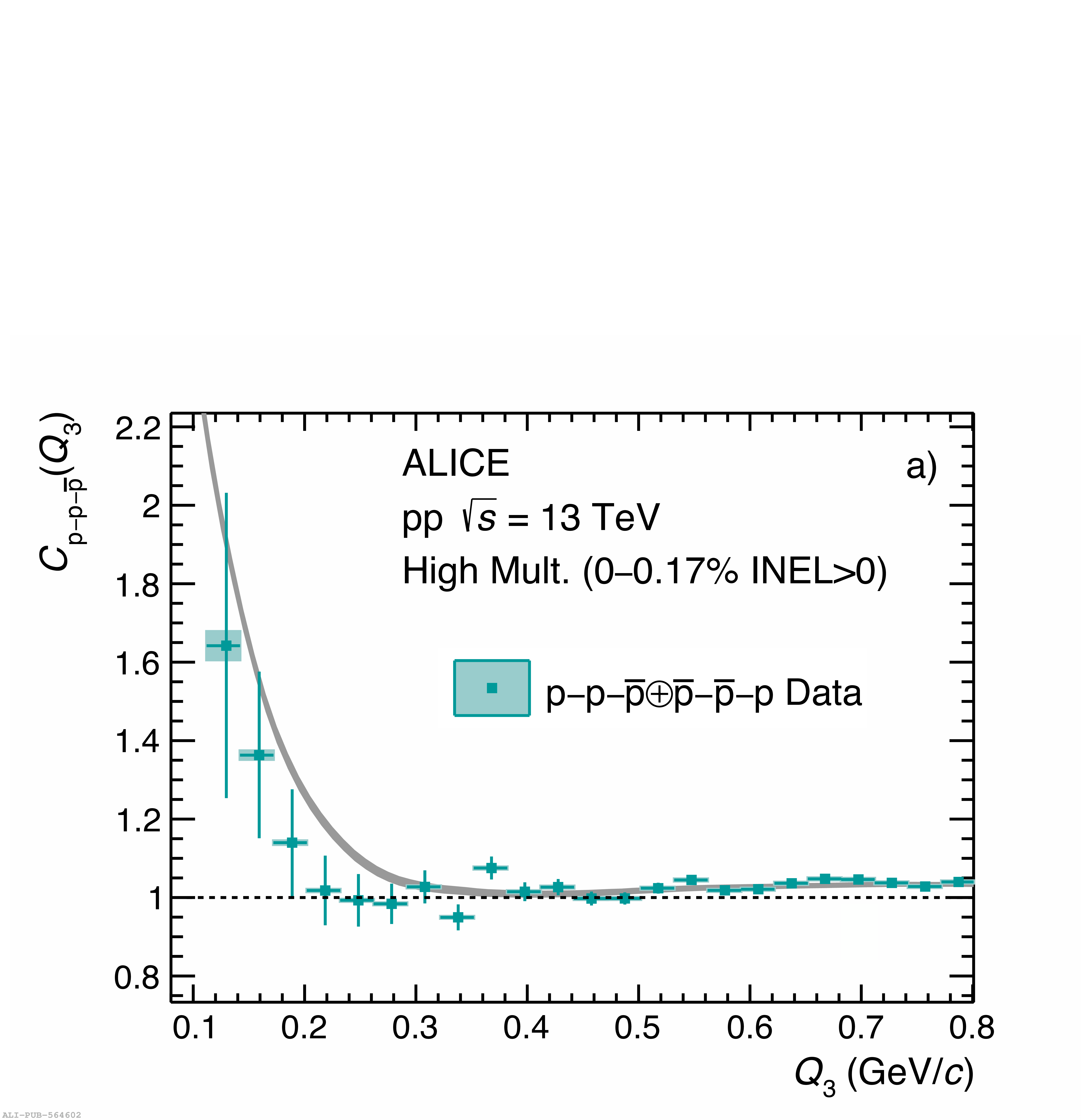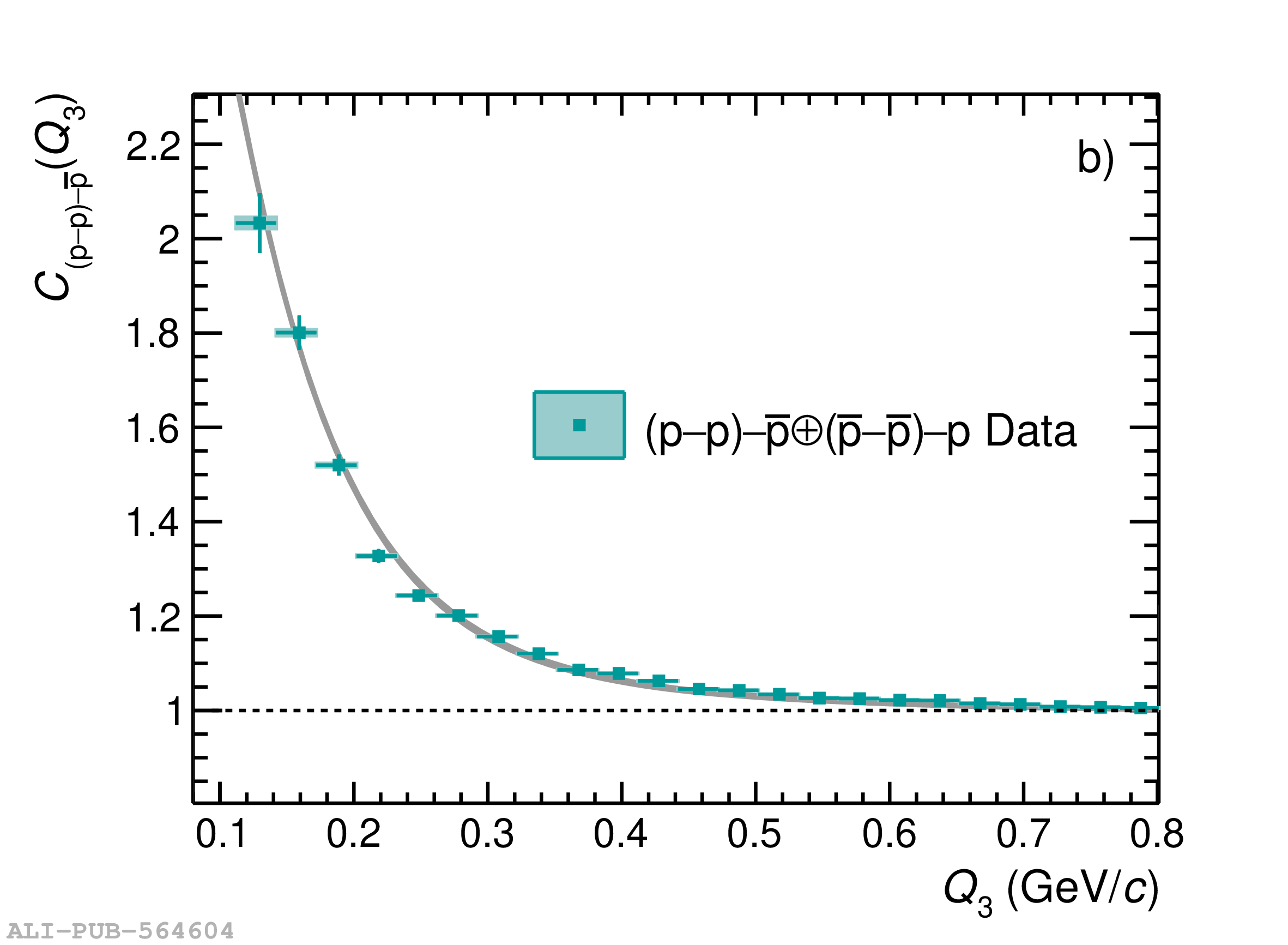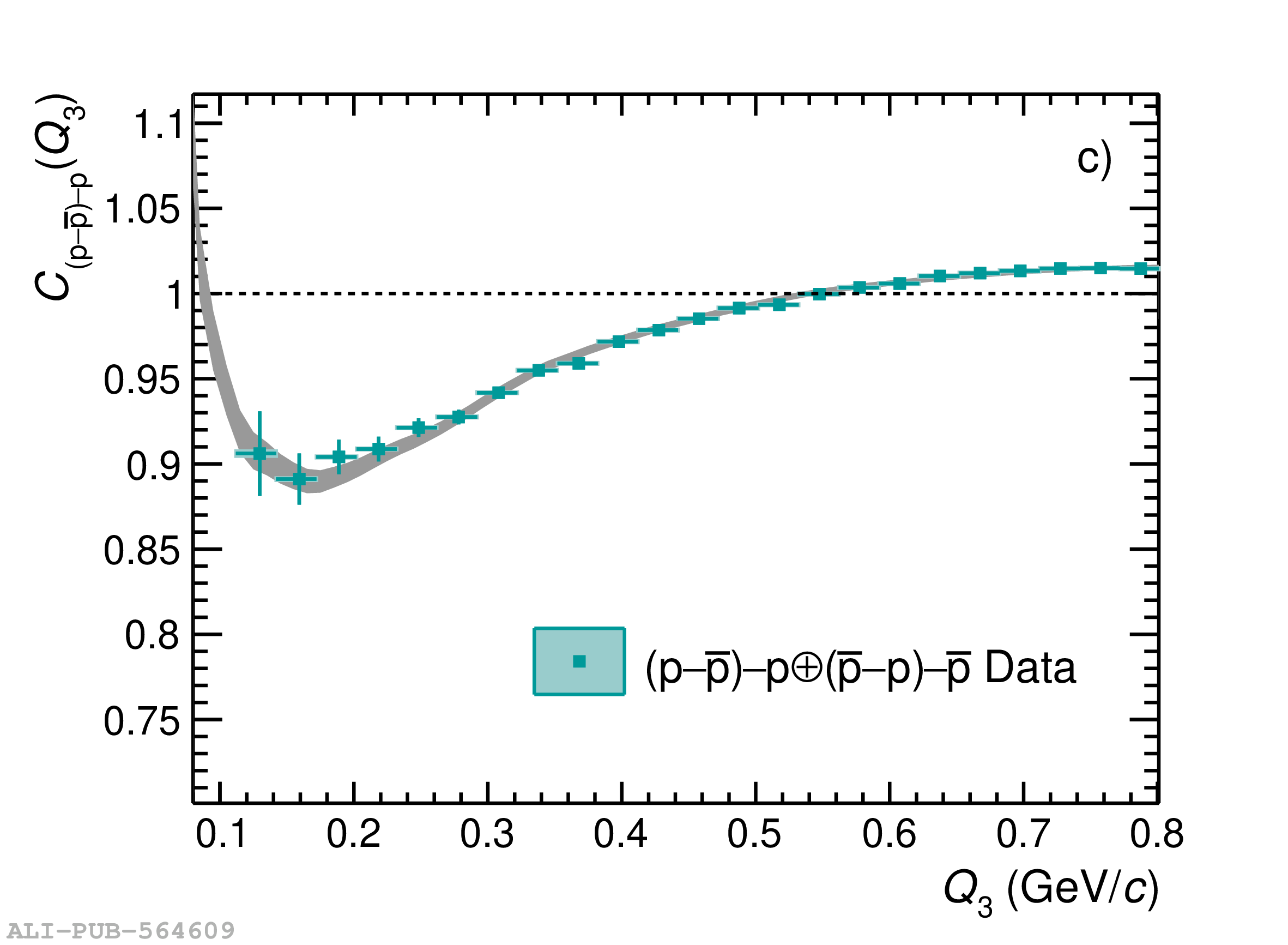Three-body nuclear forces play an important role in the structure of nuclei and hypernuclei and are also incorporated in models to describe the dynamics of dense baryonic matter, such as in neutron stars. So far, only indirect measurements anchored to the binding energies of nuclei can be used to constrain the three-nucleon force, and if hyperons are considered, the scarce data on hypernuclei impose only weak constraints on the three-body forces. In this work, we present the first direct measurement of the p$-$p$-$p and p$-$p$-\Lambda$ systems in terms of three-particle correlation functions carried out for pp collisions at $\sqrt{s} = 13$ TeV. Three-particle cumulants are extracted from the correlation functions by applying the Kubo formalism, where the three-particle interaction contribution to these correlations can be isolated after subtracting the known two-body interaction terms. A negative cumulant is found for the p$-$p$-$p system, hinting to the presence of a residual three-body effect while for p$-$p$-\Lambda$ the cumulant is consistent with zero. This measurement demonstrates the accessibility of three-baryon correlations at the LHC.
Eur. Phys. J. A 59 (2023) 145
HEP Data
e-Print: arXiv:2206.03344 | PDF | inSPIRE
CERN-EP-2022-110
Figure group


